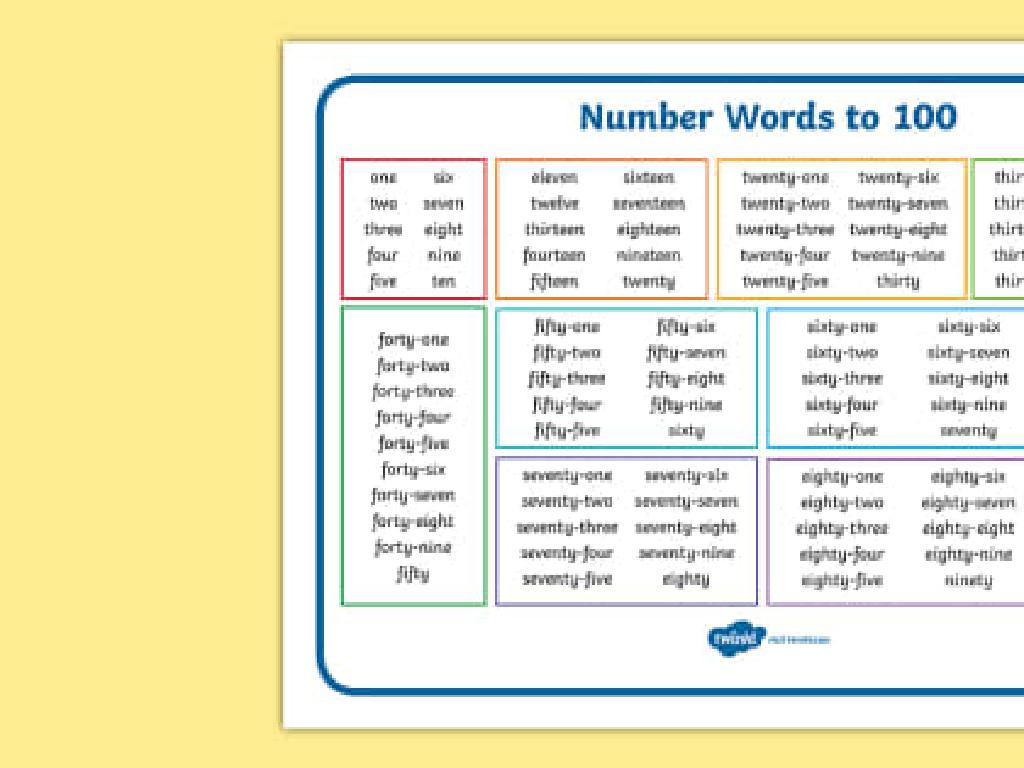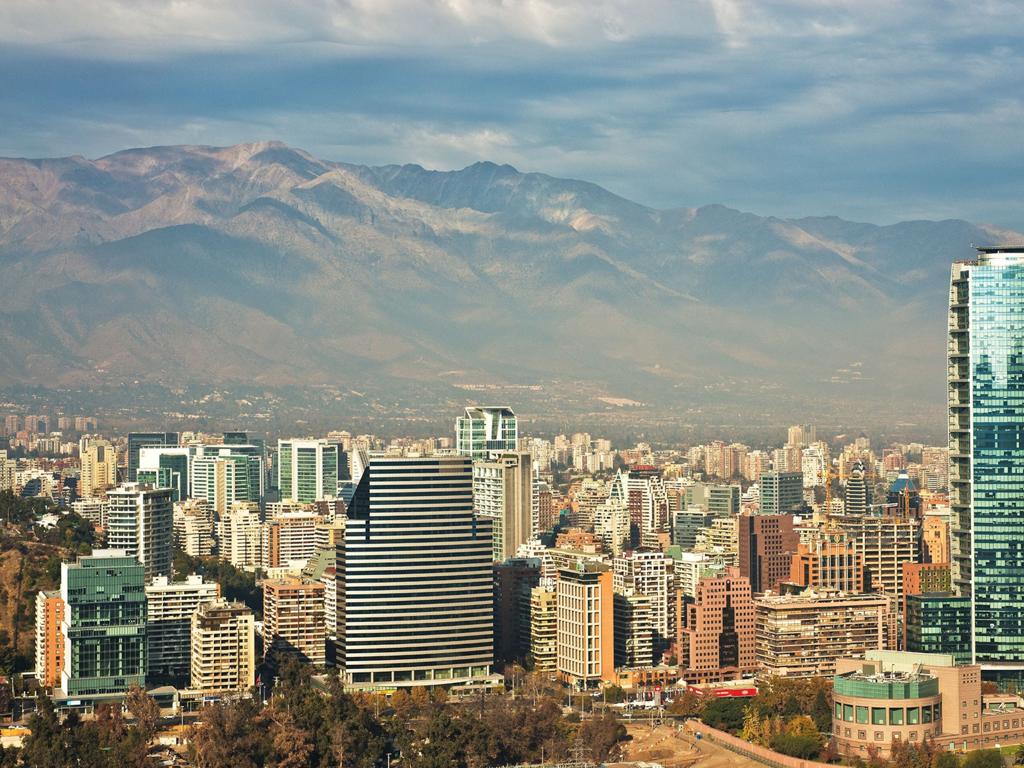Identify Countries Of Africa: Review
Subject: Social studies
Grade: Eighth grade
Topic: Africa: Geography
Please LOG IN to download the presentation. Access is available to registered users only.
View More Content
Africa: Geography Review
– Recap of Africa’s geography
– Review the physical features, climate zones, and regions we’ve explored.
– Importance of African geography
– Understanding Africa’s geography helps appreciate its cultural and economic diversity.
– Quick quiz on African countries
– Can you recall three countries from our lessons? Write them down!
– Engage with African diversity
|
This slide aims to consolidate the students’ knowledge of African geography, emphasizing the importance of understanding the continent’s diverse countries. Start by recapping the key geographical features, such as the Sahara Desert, Nile River, and various climate zones. Highlight how geography influences culture, economy, and global relations. Engage the class with a quick quiz to recall three countries studied, reinforcing their learning. Encourage students to appreciate the vast diversity within Africa, moving beyond stereotypes and appreciating each country’s unique characteristics. This review sets the stage for more in-depth discussions on African countries and their global significance.
The Continent of Diversity: Africa
– Explore Africa’s diverse geography
– Deserts, rainforests, savannas shape its landscape
– Delve into cultural richness
– Home to 2000+ languages, various traditions, and rich history
– Overview of Africa’s economy
– Economy driven by agriculture, mining, and manufacturing
– Review major natural resources
– Africa is rich in diamonds, gold, oil, and rare earth metals
|
This slide aims to encapsulate the vast diversity of Africa, highlighting its varied geography, which includes deserts like the Sahara, lush rainforests, and expansive savannas. Emphasize the cultural wealth of the continent, with a multitude of languages, traditions, and a history that dates back to the dawn of humanity. Discuss the economic aspects, focusing on how natural resources and industries such as agriculture, mining, and manufacturing contribute to the continent’s economy. Encourage students to think about how these factors influence the daily lives of people in different African countries. Provide examples of countries that are rich in specific resources, such as Nigeria’s oil production or the diamond mines of Botswana and South Africa.
Exploring Northern Africa
– Countries of Northern Africa
– Egypt, Libya, Tunisia, Algeria, Morocco, etc.
– Sahara Desert’s influence
– The Sahara shapes the climate and way of life.
– Historical landmarks
– Pyramids of Giza, Carthage, Alexandria.
– Cultural significance
|
This slide aims to review the countries of Northern Africa and their geographical and historical significance. Start by listing the countries in the region, ensuring students can identify them on a map. Discuss how the Sahara Desert, the largest hot desert in the world, influences the climate, economy, and culture of these countries. Highlight key historical landmarks such as the Pyramids of Giza in Egypt, the ancient city of Carthage in Tunisia, and Alexandria in Egypt, emphasizing their importance in world history. Engage students by discussing the cultural impact of these landmarks and the Sahara on the people living in Northern Africa. Encourage students to explore more about the region’s history and culture as part of their review.
Exploring Sub-Saharan Africa
– West vs. East vs. Central vs. Southern Africa
– Understand the geographical divisions and characteristics
– Regional key features: Climate, culture, economy
– Each region has distinct climate, cultural practices, and economic activities
– Nigeria: Africa’s giant economy
– Nigeria’s economy is one of the largest in Africa, driven by oil and agriculture
– Kenya and Congo: Wildlife and rainforests
– Kenya is renowned for its diverse wildlife, while Congo boasts expansive rainforests
|
This slide aims to review the different regions of Sub-Saharan Africa, focusing on their unique features. Students should be able to differentiate between West, East, Central, and Southern African countries by the end of the lesson. Highlight the key aspects of each region, such as the arid climate in the East, the cultural diversity in the West, the dense rainforests in Central Africa, and the mining economy in the South. Use Nigeria as an example of a booming economy, Kenya for its tourism and wildlife conservation, and Congo for its vast rainforests. Encourage students to think about how these features impact the lives of the people living there and the continent’s role in the global context.
Island Nations of Africa
– Explore African island nations
– Madagascar, Seychelles, Mauritius, etc.
– Unique biodiversity due to isolation
– Species not found anywhere else on Earth
– Economic activities in these islands
– Tourism and fishing are key industries
– Focus on Madagascar’s economy
– Madagascar is a top producer of vanilla
|
This slide aims to review the island nations of Africa, highlighting their geography, biodiversity, and economic activities. Students should explore how the isolation of islands like Madagascar, Seychelles, and Mauritius has resulted in unique flora and fauna. Discuss the significance of tourism and fishing to the economies of these islands, and how Madagascar’s vanilla production impacts the global market. Encourage students to think about the environmental and economic challenges these islands face. Provide examples of unique species and discuss conservation efforts. Engage students by discussing how island economies differ from mainland economies due to their geographical isolation.
Interactive Map Exploration: African Countries
– Locate African countries using the map
– Discuss each country’s significance
– Consider factors like trade, climate, and history
– Interactive map activity
– Students take turns identifying countries
– Engage with African geography
|
This slide introduces an interactive map activity aimed at helping students identify and learn about the countries of Africa. The activity will reinforce their knowledge of African geography and the significance of location on aspects such as trade routes, climate zones, and historical events. For the activity, each student will have the opportunity to come up to the map and identify a country. Teachers should prepare by ensuring the interactive map is functional and accessible. Possible variations of the activity include having students mention a fact about the country they identify, focusing on countries that are less commonly known to increase awareness, or grouping countries by region to discuss similarities and differences in location-based characteristics.
Class Activity: African Country Fact Files
– Choose an African country
– Research geography and culture
– Look into the country’s landscape, climate, and major cities
– Find one interesting fact
– Discover traditions, languages, and cuisine
– Prepare a class presentation
– Could be about history, achievements, or a famous person
|
This activity is designed to deepen students’ knowledge of African countries through active research and presentation. Students should select a country and gather information about its geography, including physical features and climate, as well as cultural aspects such as languages, traditions, and typical foods. They should also find an interesting fact that makes the country unique, which could be a historical event, a notable achievement, or a famous individual from that country. Encourage students to use reliable sources and to create engaging presentations to share with their peers. Provide a list of suggested resources, and remind them to cite their sources. Offer support and guidance as needed during the research process. Possible activities include creating a poster, a PowerPoint presentation, or a written report. This will help students practice their research, writing, and public speaking skills.





